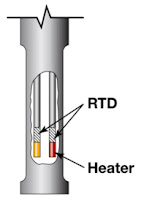This video demonstrates how to calibrate a 4-20 mA transmitter in a hazardous environment using a portable calibrator, in this case, the WIKA CPH7000 Ex.
Before you do calibrations in a hazardous (Ex) space, you must be aware of several things. There are many levels of dangerous areas, as well as various levels of calibrating equipment to choose. A hazardous location includes or may contain combustible substances (whether indoors or outdoors). It could be a liquid, gas, vapor, or dust that is combustible. Depending on the hazardous area classification, a flammable substance may be present all of the time, a particular percentage of the time, or just in specific instances, such as during shutdowns or accidents.
In the best of circumstances, calibration can be a challenging task. Doing so in an area with a risk of explosion raises the complexity level to a new level, requiring the technician to have the necessary training and equipment. The WIKA CPH7000 Ex process calibrator is a precise, easy-to-use portable instrumentation calibrator that tests process transmitters in hazardous areas.
For more information WIKA products, or about instrument calibration in general, contact Miller Energy, Inc.
Miller Energy, Inc.
800-631-5454
https://millerenergy.com

